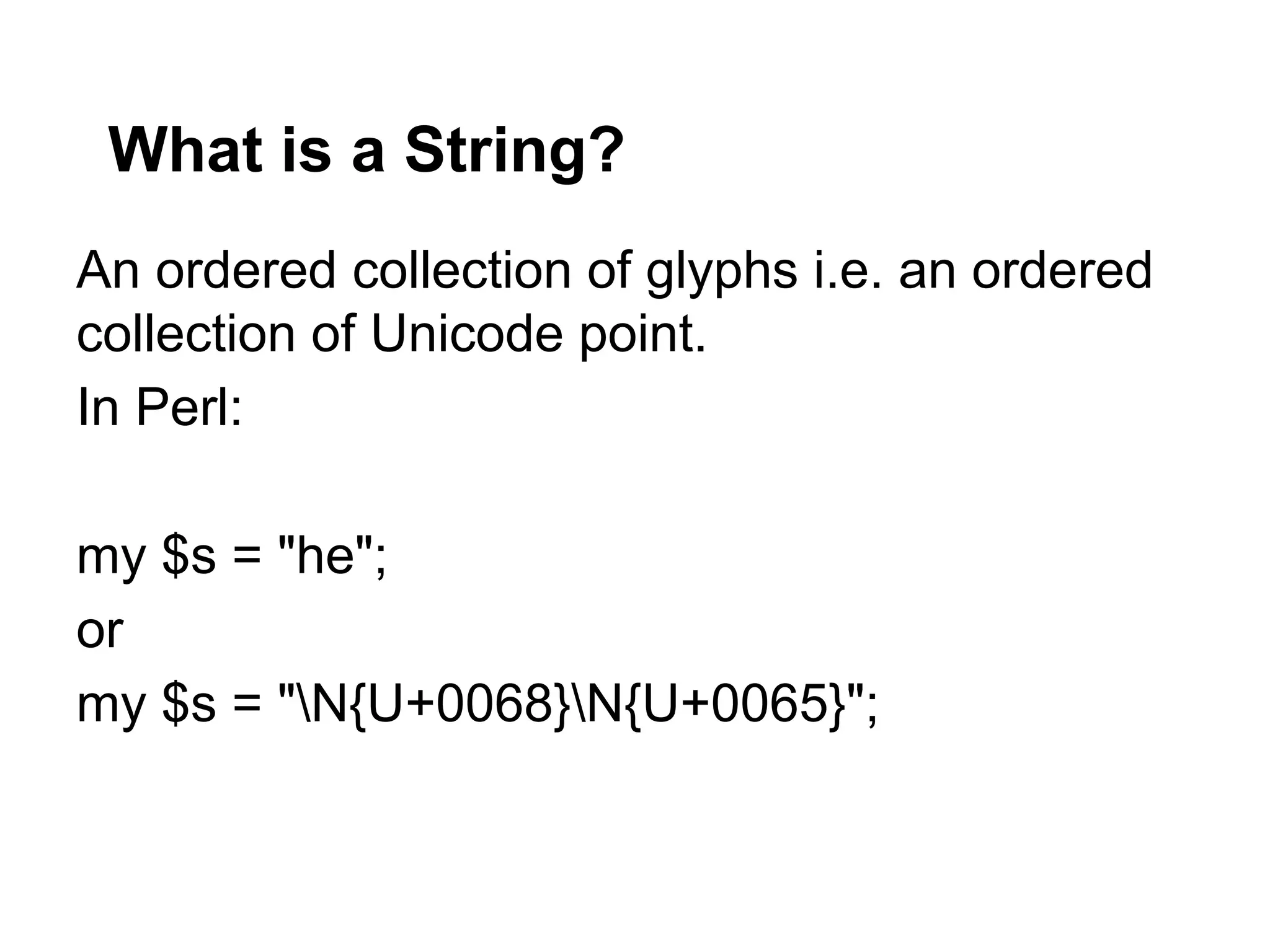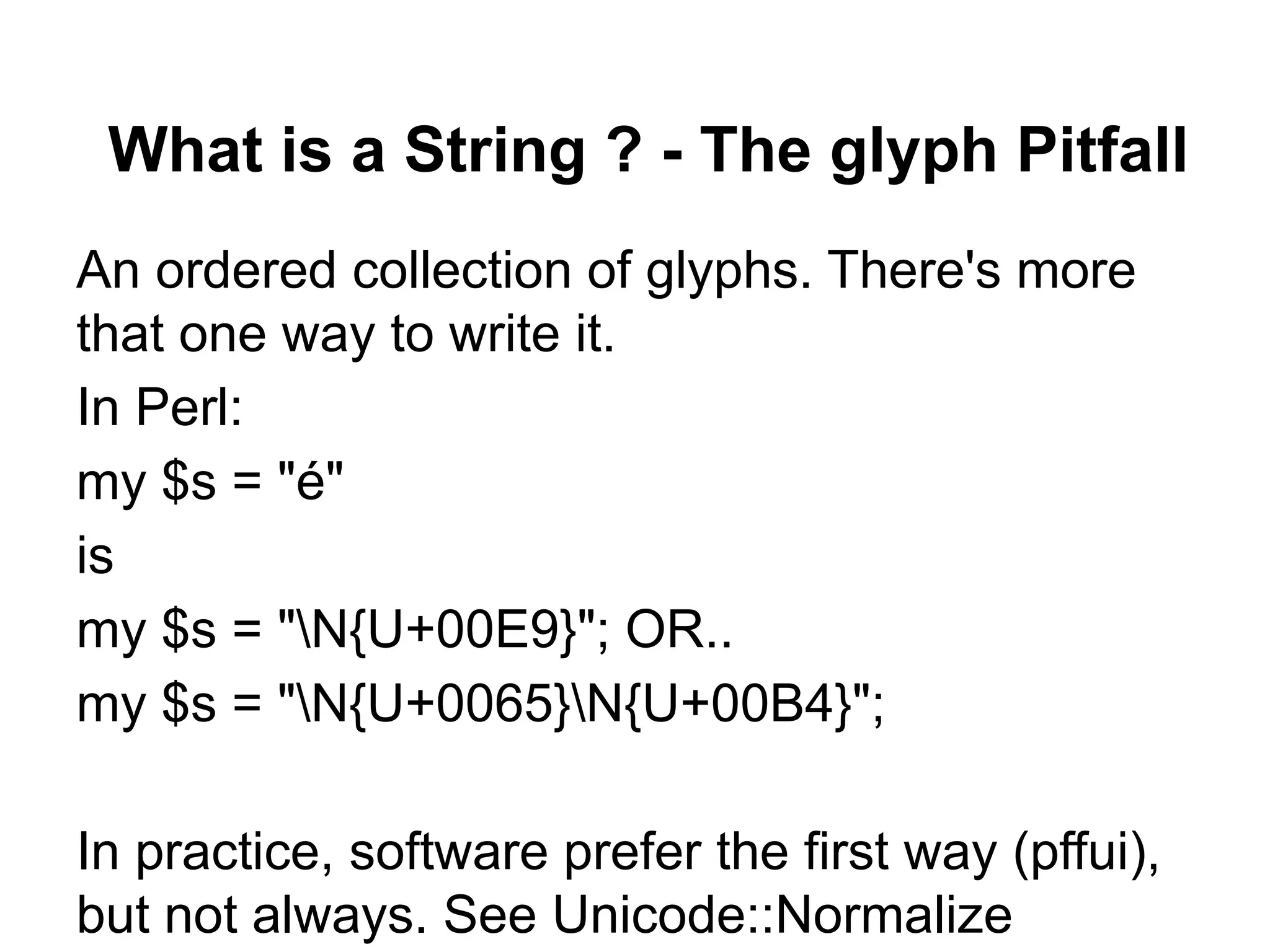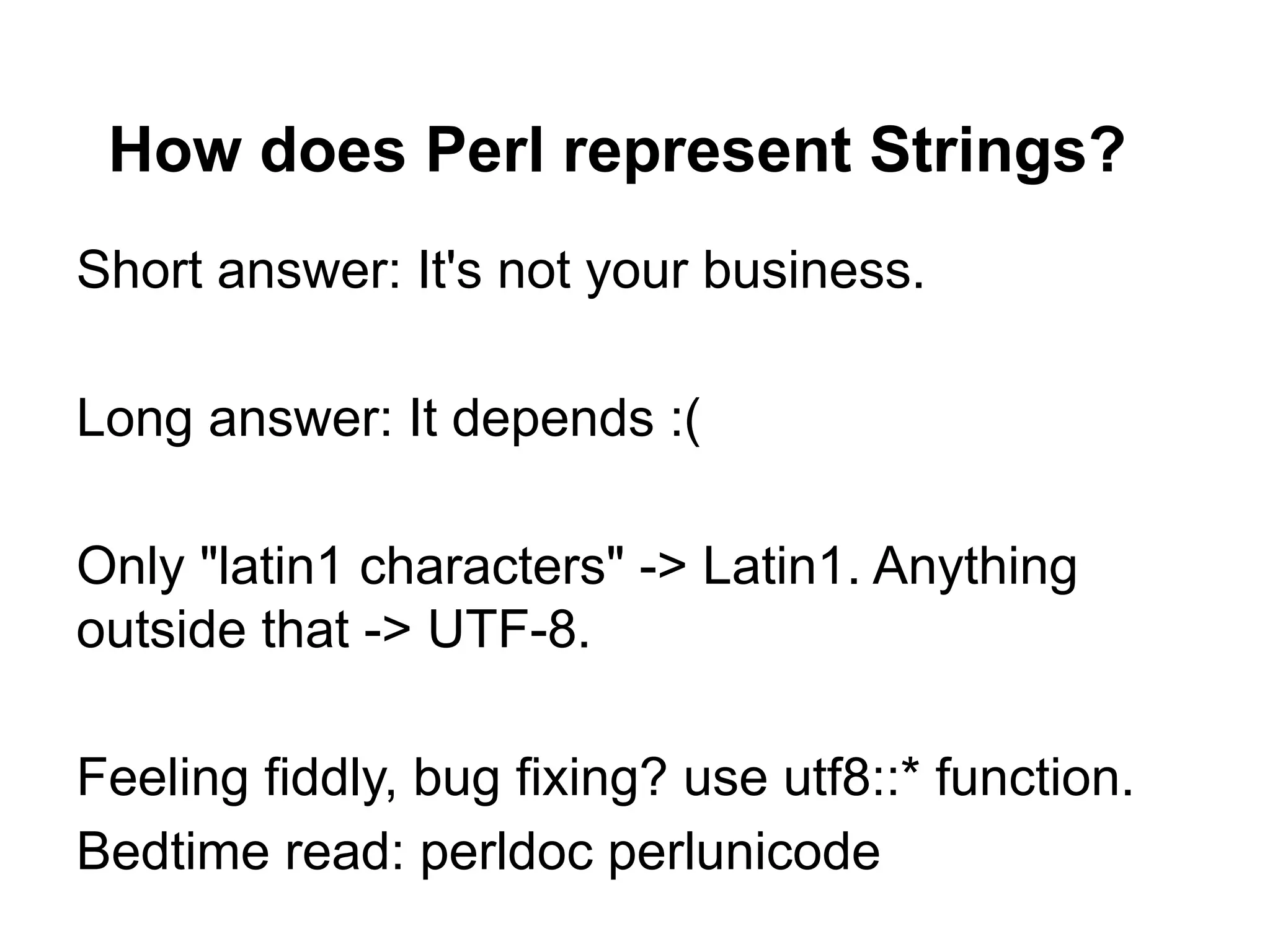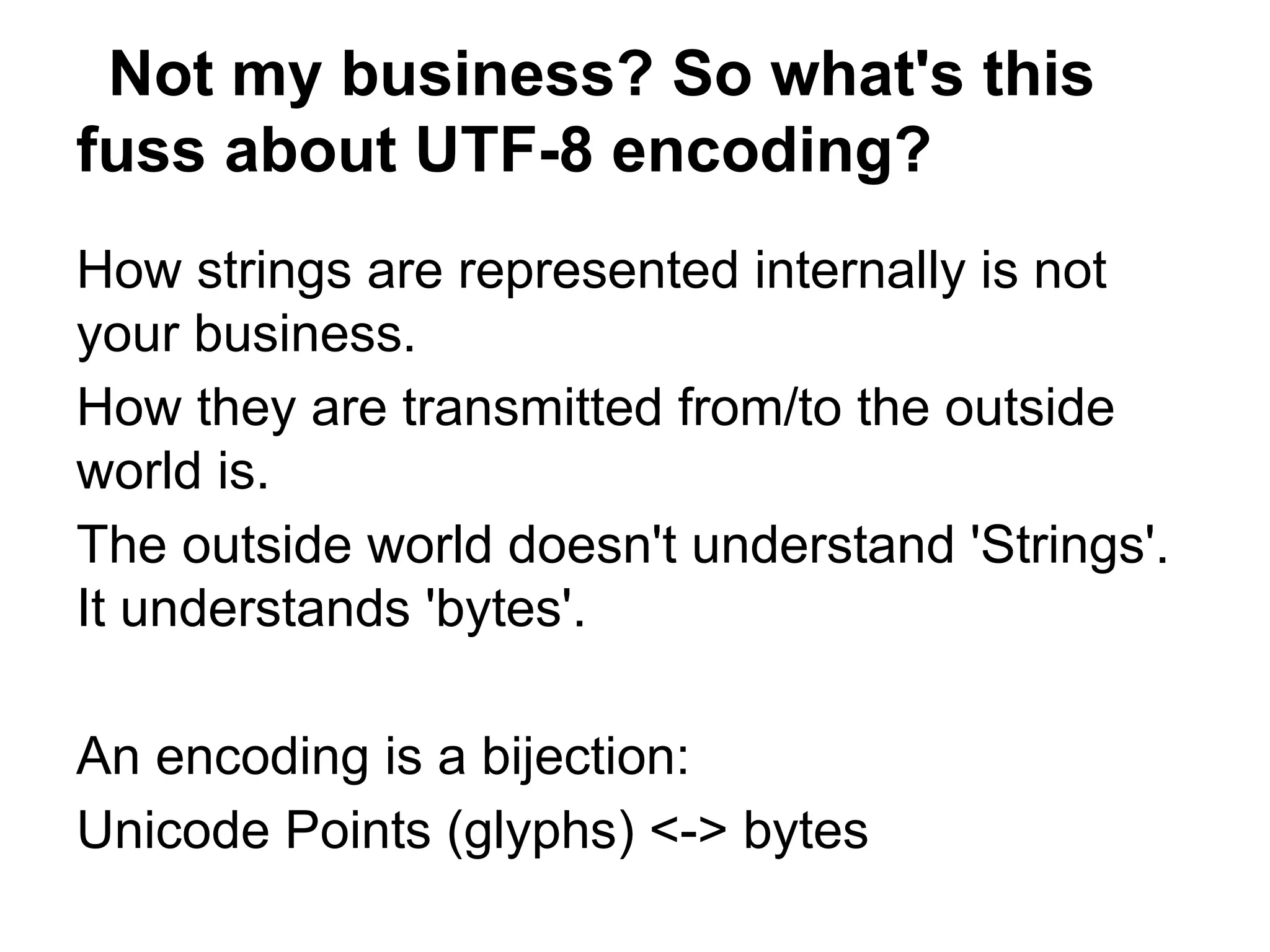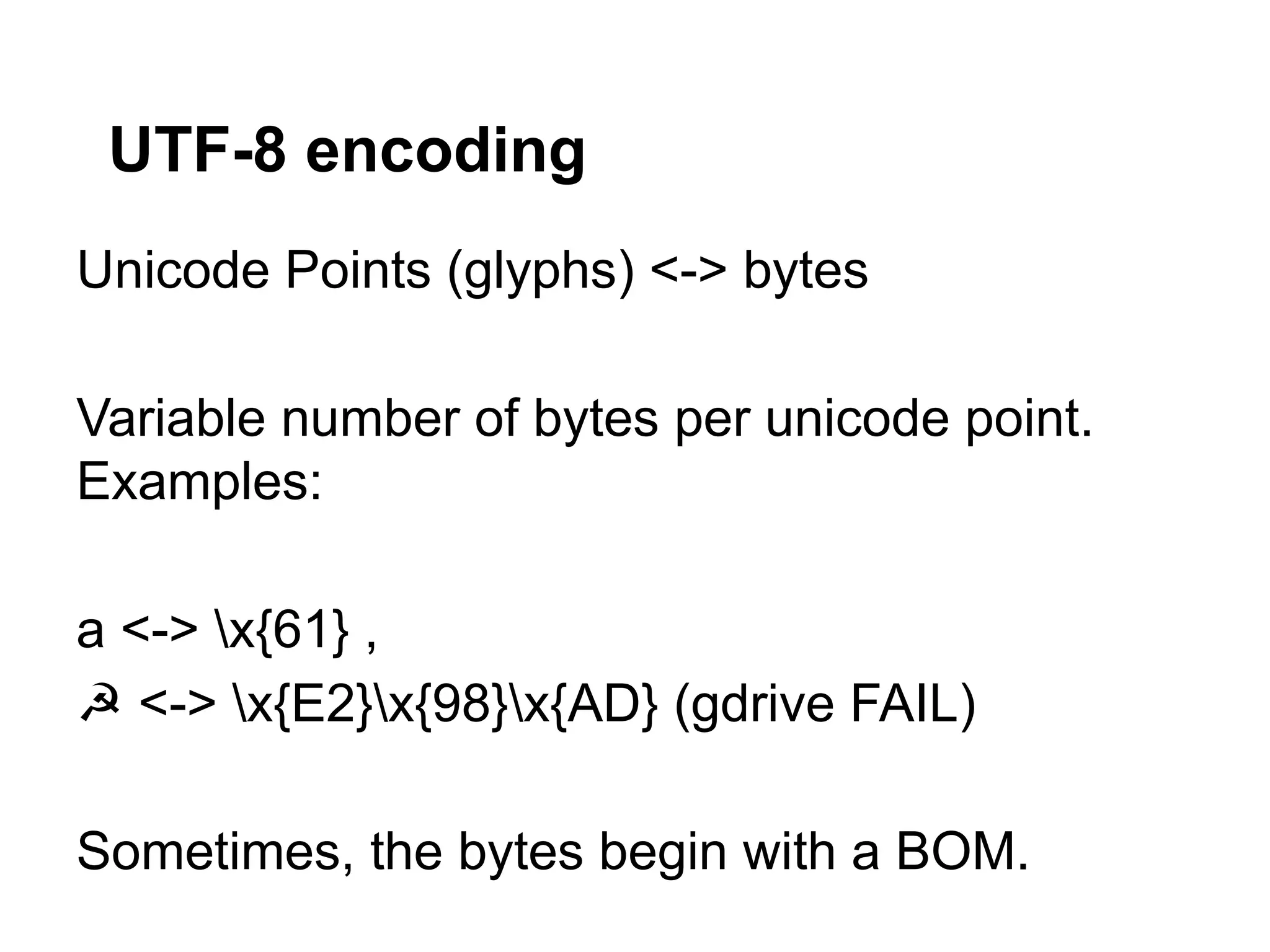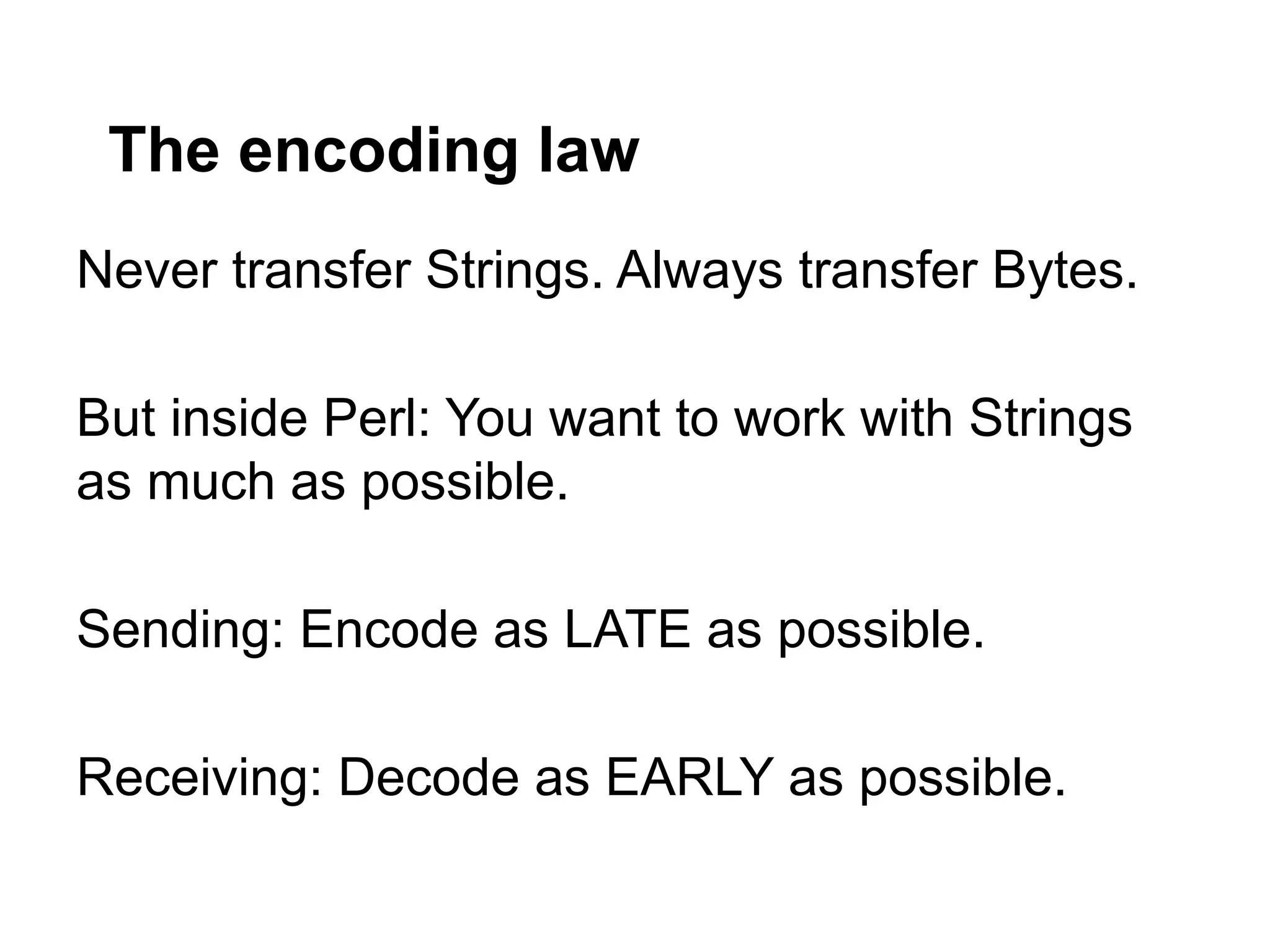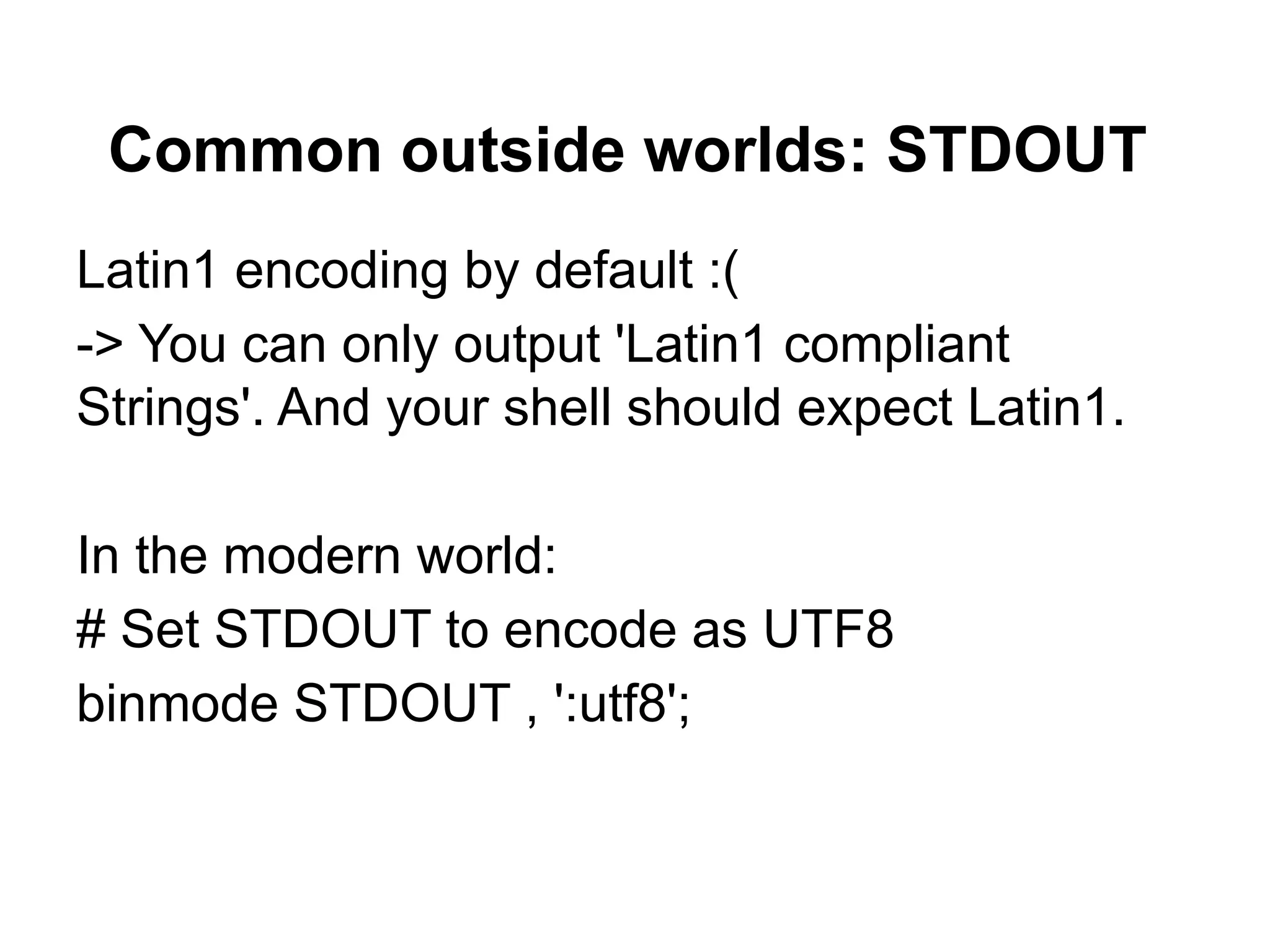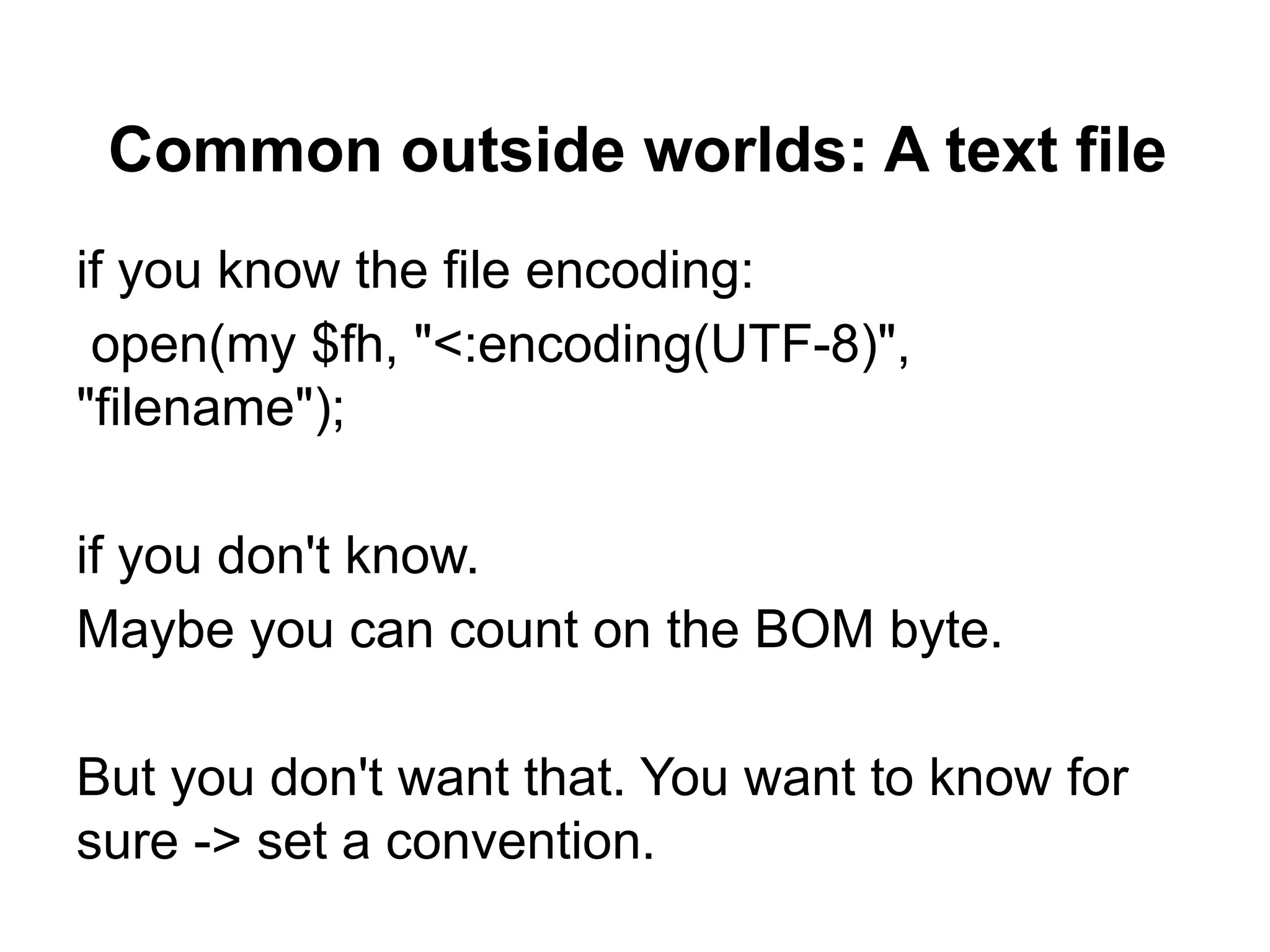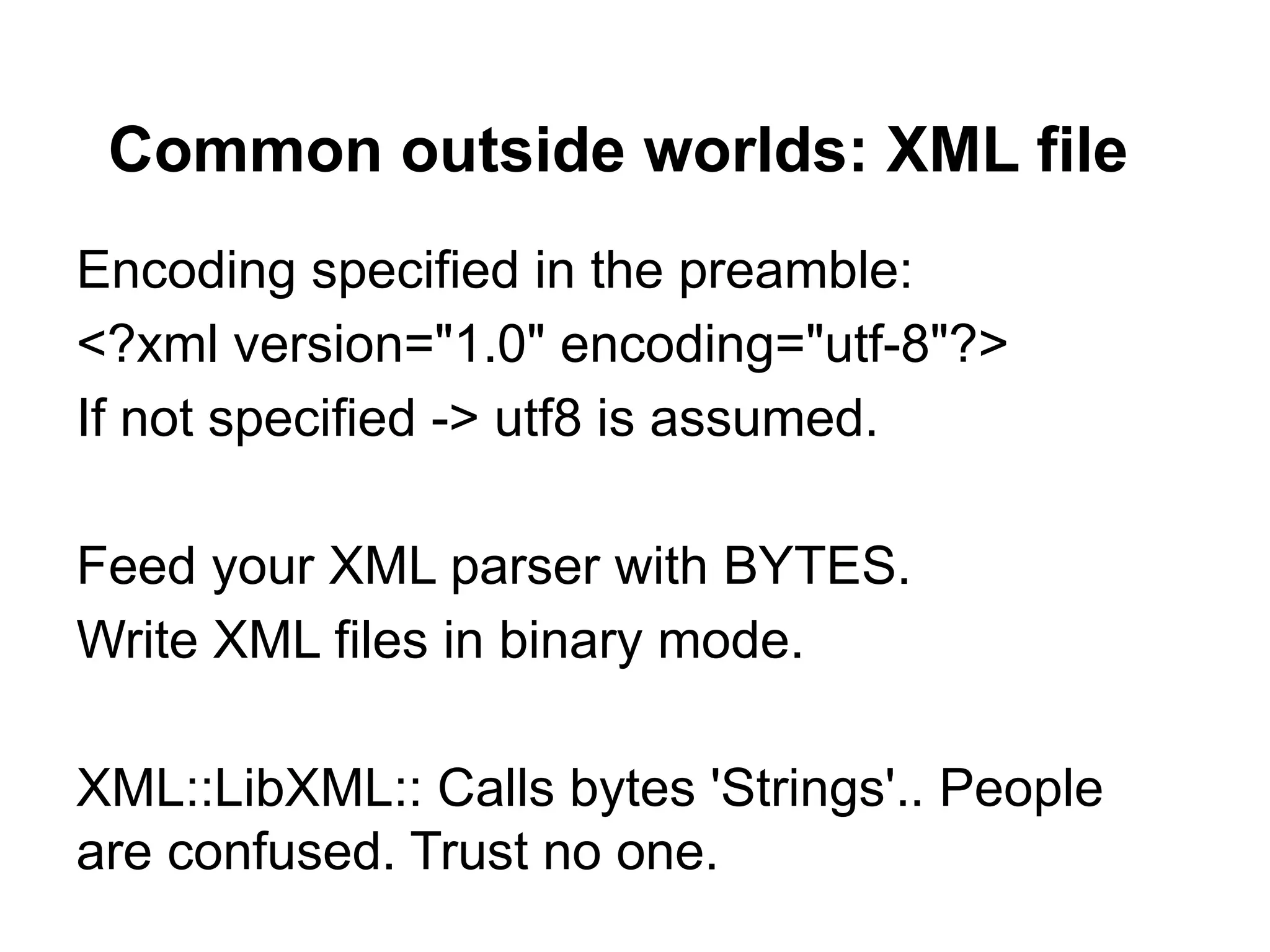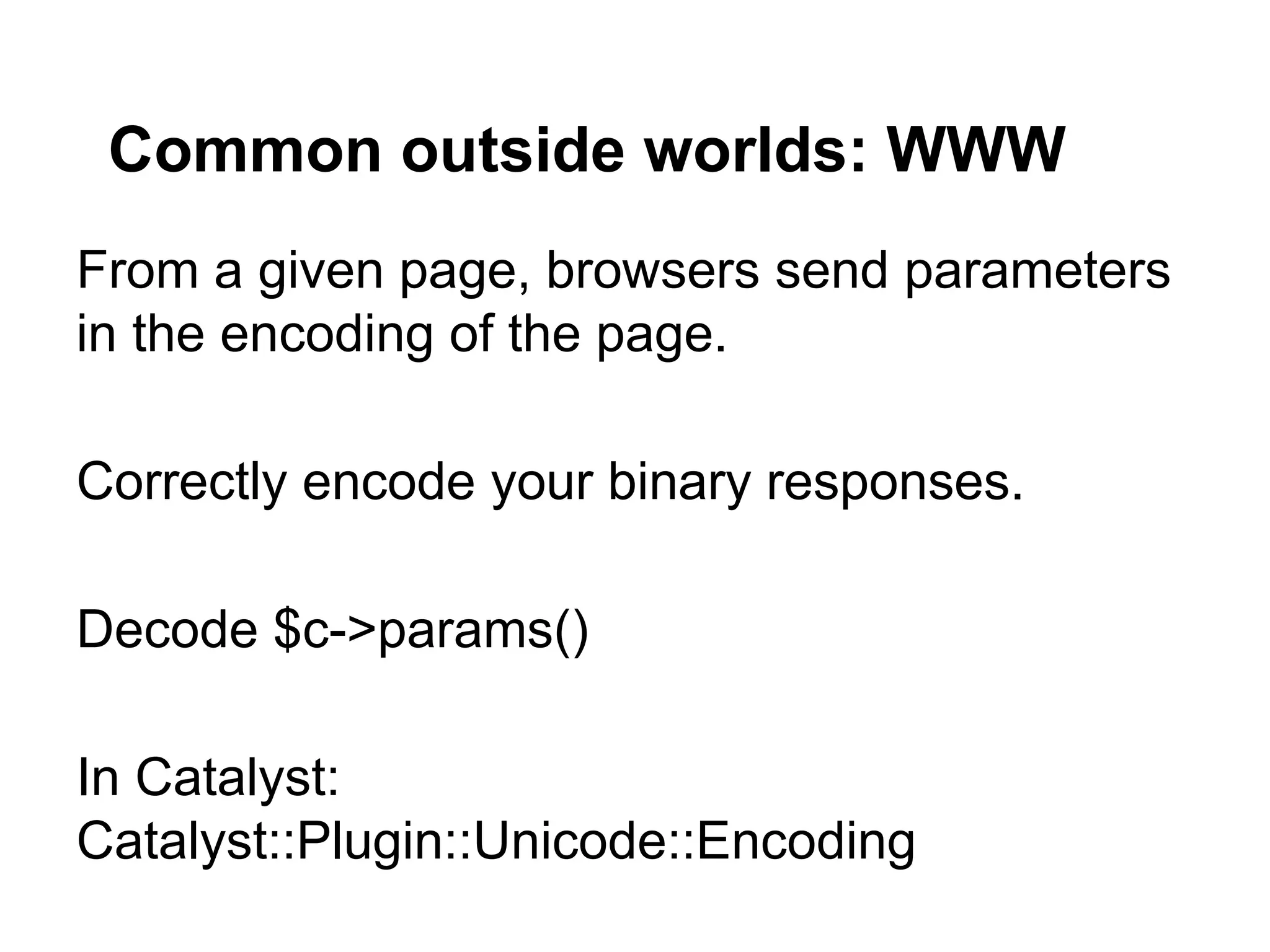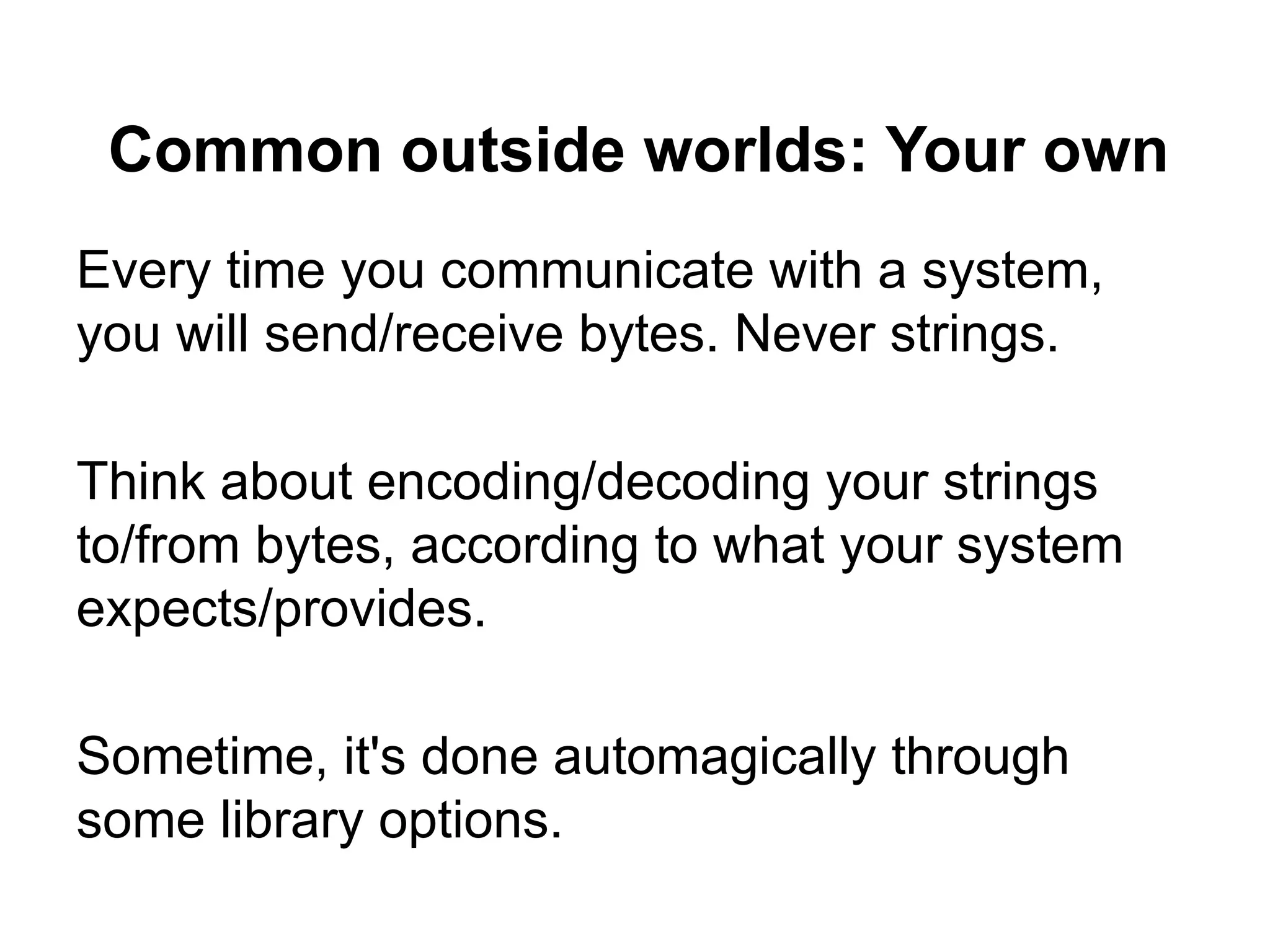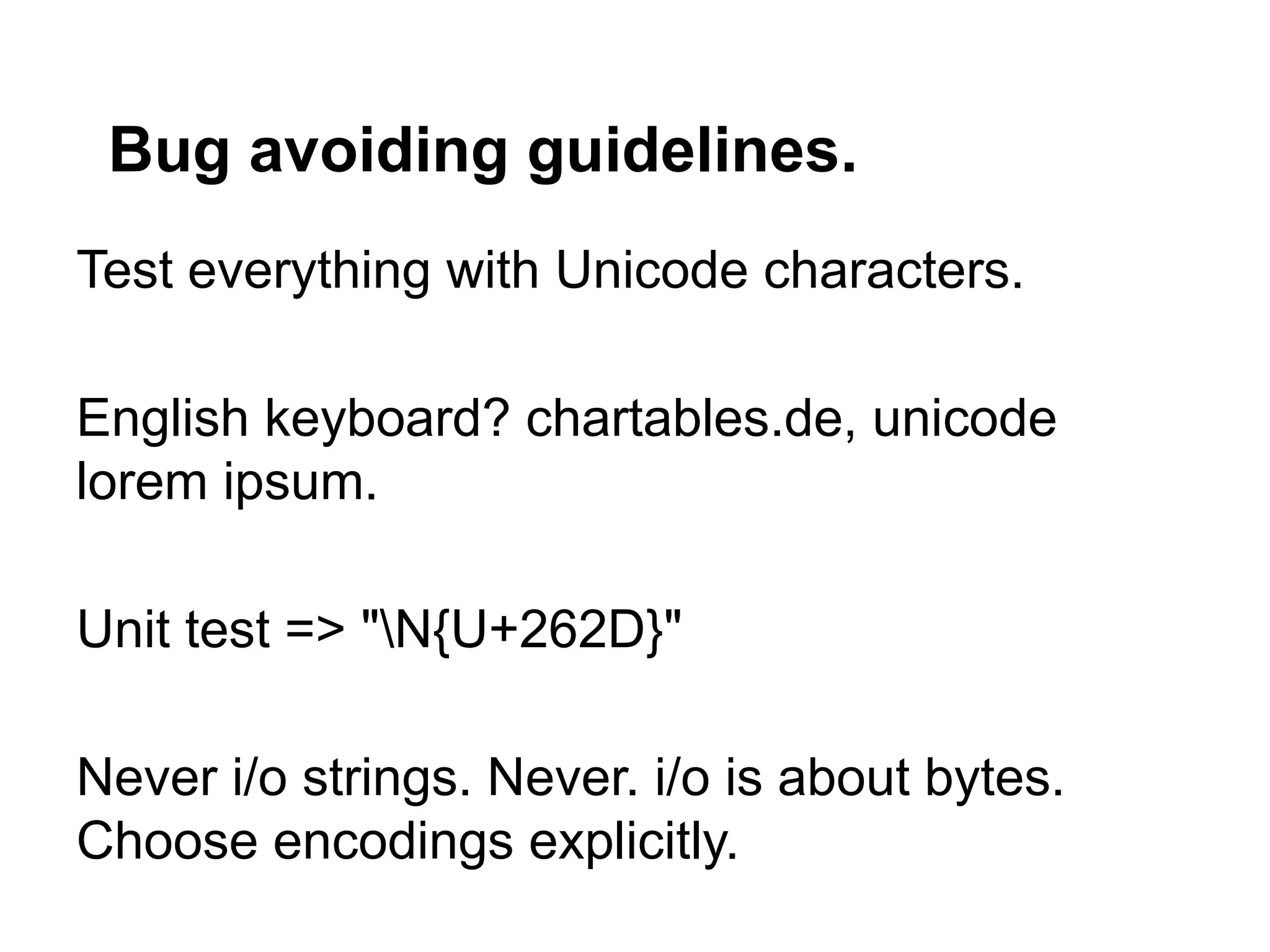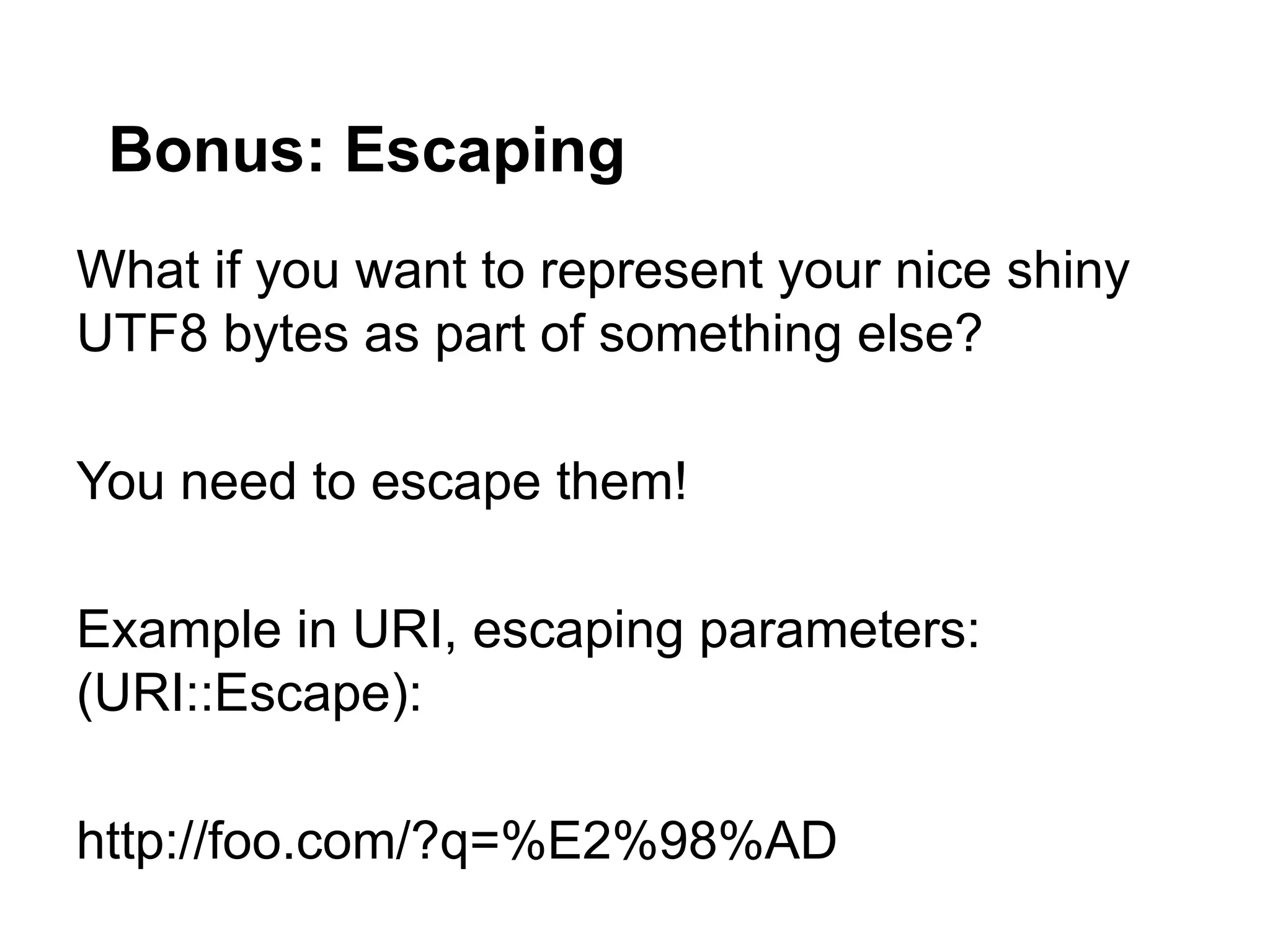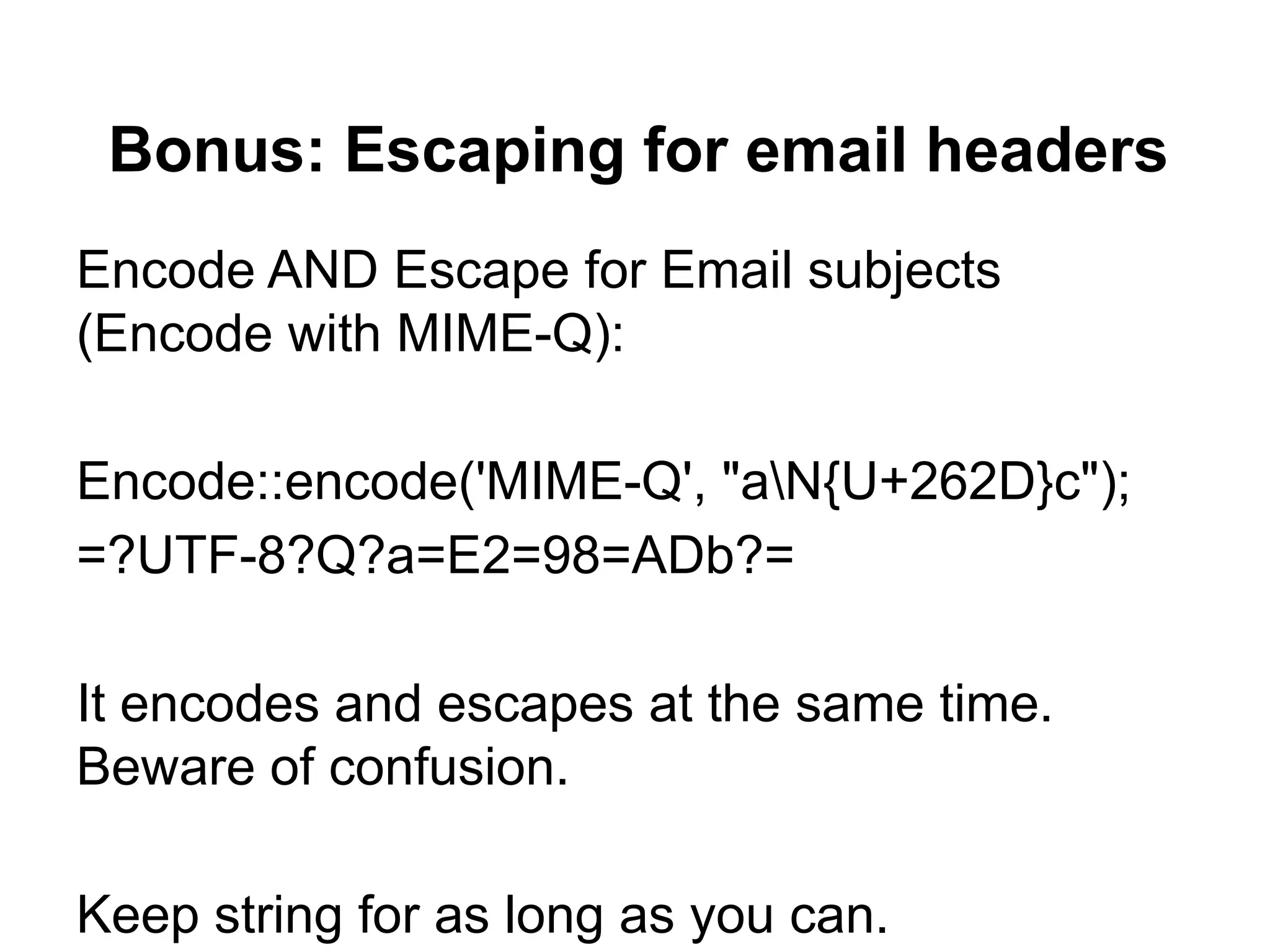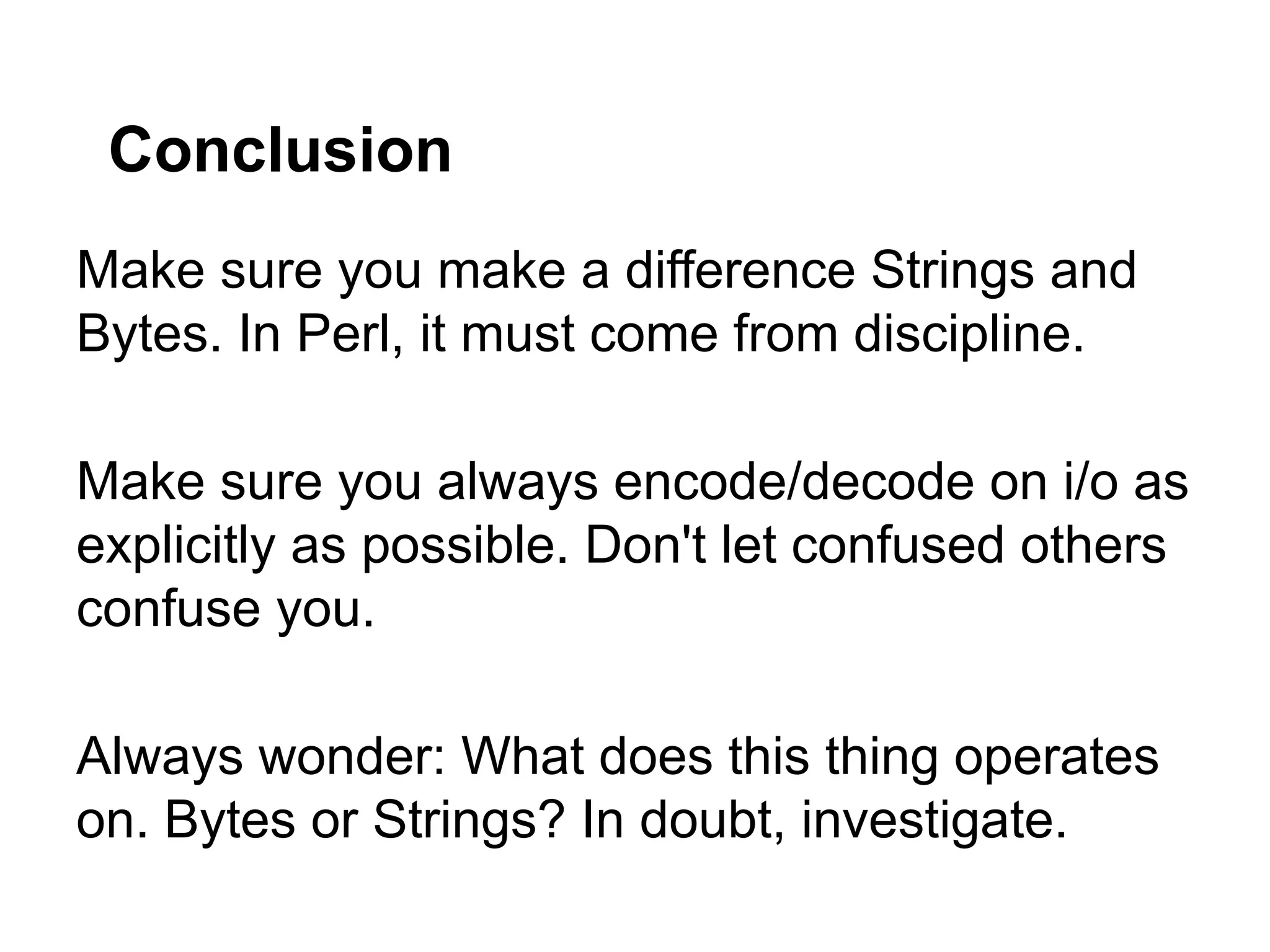The document provides guidance on understanding Unicode and UTF-8 in Perl, emphasizing the distinction between characters, glyphs, strings, and bytes. It explains how to handle string encoding and decoding for input and output, along with best practices for avoiding common pitfalls. It concludes with the importance of discipline in handling strings and bytes explicitly to prevent confusion.
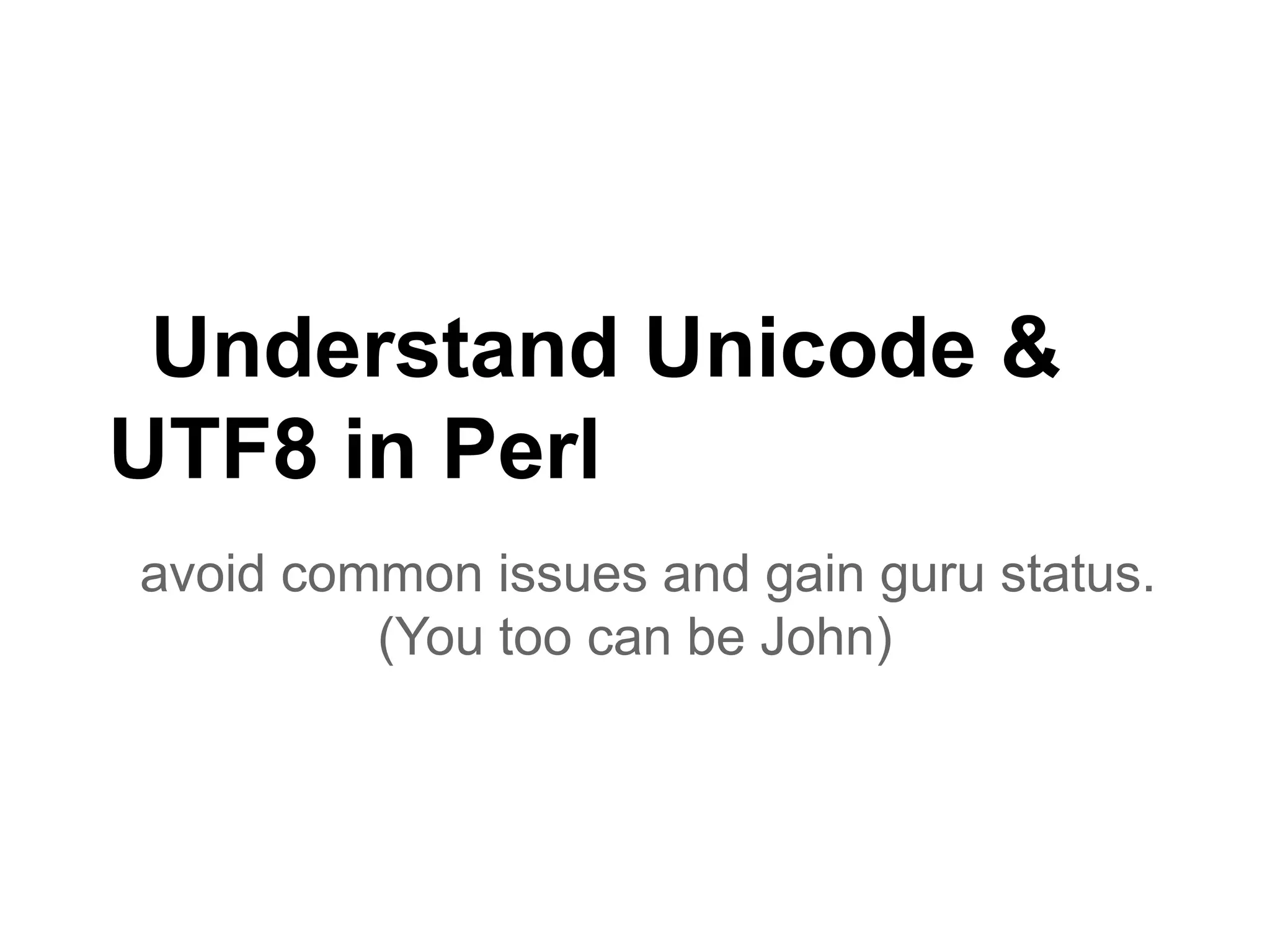
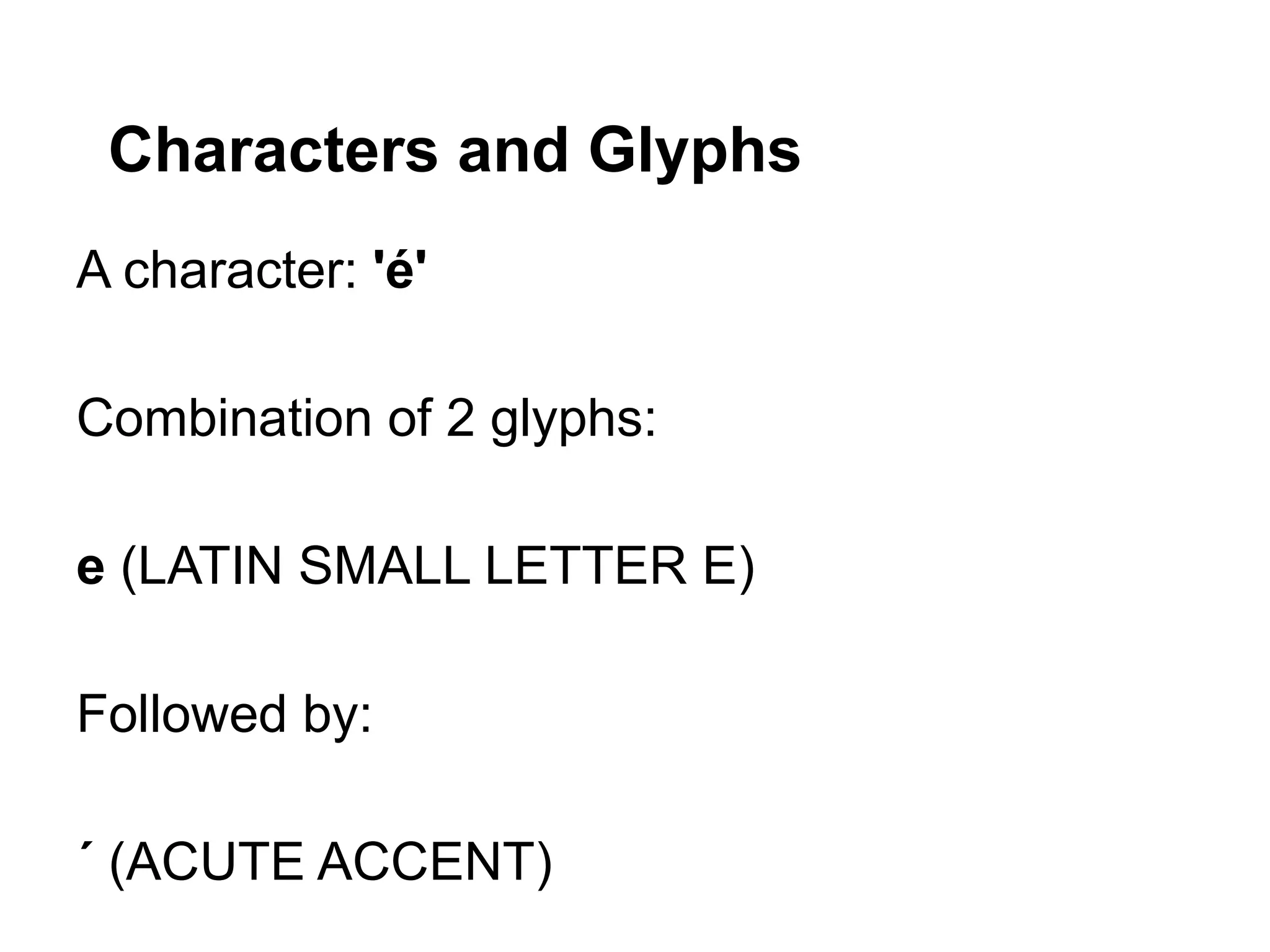
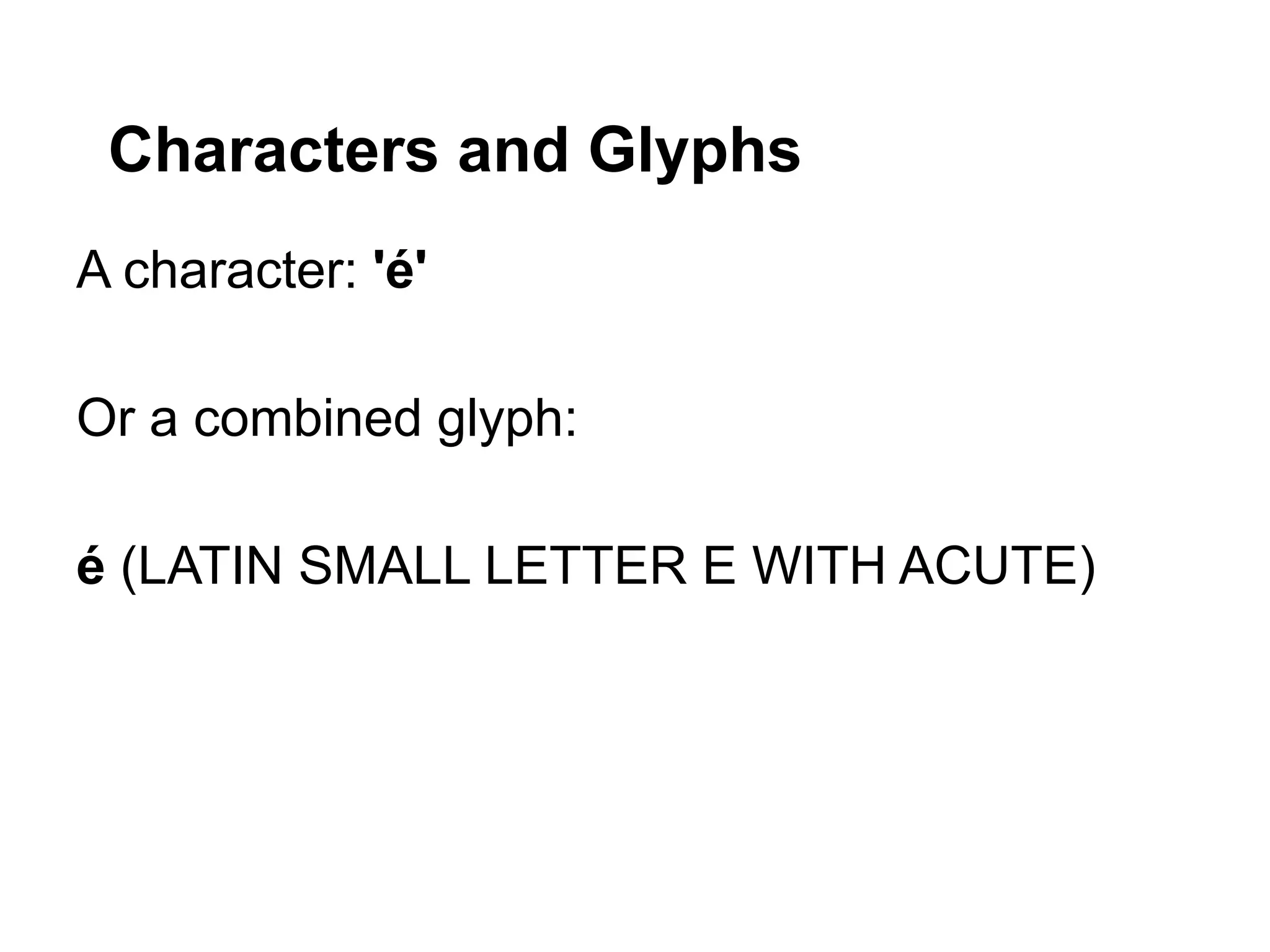
![So what is Unicode (in this
context)?
A collection of glyphs (mainly) called
Codepoints with a unique number and a set of
properties.
Example: E ( U+0045 )
Name LATIN CAPITAL
LETTER E
Block Basic Latin
Category Letter, Uppercase [Lu]
Combine 0
BIDI BIDI
Lower case U+0065](https://image.slidesharecdn.com/understandunicodeutf8inperl2-121003063812-phpapp02/75/Understand-unicode-utf8-in-perl-2-4-2048.jpg)
